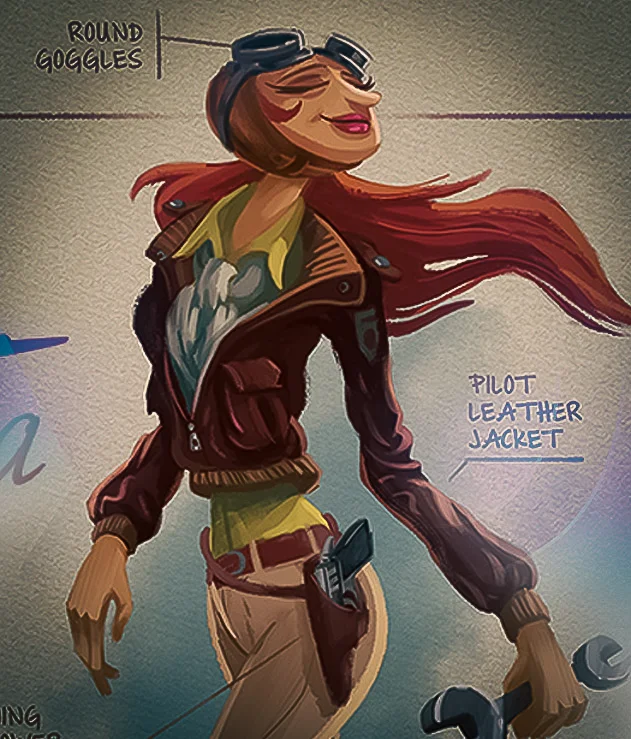 Image: Eco Mental Art (Motion Array)
Image: Eco Mental Art (Motion Array)
Augmented Reality vs. Virtual Reality
In the realm of immersive technology, two concepts have been steadily gaining momentum: Augmented Reality (AR) and Virtual Reality (VR). These technologies have the potential to reshape how we interact with the digital world, offering experiences that blur the lines between reality and imagination. As they continue to evolve, it's essential to understand the distinctions between them and the unique possibilities they present.
Understanding Augmented Reality
Augmented Reality (AR) overlays digital content onto the real world, enhancing our perception of reality rather than replacing it entirely. AR technology achieves this by using devices like smartphones, tablets, or specialized glasses to blend virtual elements with the user's physical environment. One of the most famous examples of AR technology is Pokémon GO, where players hunt for virtual creatures overlaid onto the real world through their smartphone screens.
Delving into Virtual Reality
Virtual Reality (VR), on the other hand, immerses users in entirely digital environments, shutting out the physical world. VR headsets, such as the Oculus Rift or HTC Vive, transport users to computer-generated worlds where they can explore, interact, and experience scenarios that defy reality. From gaming and entertainment to education and therapy, VR offers a myriad of applications limited only by imagination.
Contrasting Features
While both AR and VR offer immersive experiences, they differ significantly in their core functionalities and applications:
Interaction with Reality:
- AR: Augments real-world environments by overlaying digital content onto them, allowing users to interact with both physical and virtual elements simultaneously.
- VR: Completely replaces the physical world with a simulated digital environment, providing users with an immersive experience detached from reality.
Devices and Hardware:
- AR: Utilizes devices like smartphones, tablets, or AR glasses to overlay digital content onto the user's surroundings, making it accessible and portable.
- VR: Relies on specialized headsets that block out the physical world and immerse users in virtual environments, requiring more significant hardware investments.
Applications:
- AR: Finds applications in fields like gaming, navigation, education, healthcare, and retail, where it enhances real-world experiences with digital information and interactions.
- VR: Excels in gaming, simulation, training, therapy, and virtual meetings, offering fully immersive experiences that transport users to entirely new worlds.
Augmented Reality (AR) Software:
- Unity 3D: Unity is a widely-used game engine that supports AR development through its AR Foundation package. It allows developers to create AR experiences for various platforms, including iOS and Android.
- Unreal Engine: Similar to Unity, Unreal Engine offers tools for creating AR applications. With its ARKit and ARCore support, developers can build immersive AR experiences for mobile devices.
- Vuforia: Vuforia is an AR development platform that provides tools for creating marker-based and markerless AR applications. It supports multiple platforms and offers features like object recognition and tracking.
- ARKit (for iOS) and ARCore (for Android): These are development frameworks provided by Apple and Google, respectively, for creating AR apps specifically for their platforms. They offer features like motion tracking, environmental understanding, and light estimation.
- Spark AR Studio: Developed by Facebook, Spark AR Studio allows creators to build AR effects for Facebook and Instagram. It offers an intuitive interface and a wide range of effects and animations.
Virtual Reality (VR) Software:
- Unity 3D: Unity is not only suitable for AR development but also widely used for creating VR experiences. It provides tools for building VR applications for various platforms, including Oculus Rift, HTC Vive, and PlayStation VR.
- Unreal Engine: Unreal Engine also supports VR development and offers features specifically tailored for creating immersive VR experiences. Developers can leverage its visual scripting system (Blueprints) or traditional coding for VR development.
- SteamVR: SteamVR is a platform developed by Valve Corporation for creating and distributing VR content. It provides tools for VR development and supports multiple VR headsets, including the HTC Vive and Oculus Rift.
- Google VR SDK: Google VR SDK (formerly known as Cardboard SDK) enables developers to create VR experiences for Android and iOS devices. It supports both Cardboard-compatible viewers and Daydream-ready devices.
- Oculus SDK: Oculus SDK is provided by Oculus VR, the company behind Oculus Rift and Oculus Quest. It offers development tools, APIs, and documentation for building VR applications specifically for Oculus headsets.
Frequently Asked Questions
Which technology offers a more immersive experience?
Both AR and VR offer immersive experiences, but they differ in their approach. VR provides a more complete immersion by shutting out the physical world entirely, while AR blends digital content with the real world, offering a more augmented experience.
What are some popular examples of AR and VR applications?
Popular examples of AR applications include Pokémon GO, Snapchat filters, and Google Maps AR navigation. VR applications range from immersive gaming experiences like Beat Saber and Half-Life: Alyx to VR training simulations used by industries like healthcare and aviation.
Are there any drawbacks to AR and VR technology?
Some challenges associated with AR and VR technology include hardware limitations, concerns about privacy and data security, potential for motion sickness in VR, and the need for robust content creation pipelines to sustain user engagement.
How accessible are AR and VR devices?
AR devices like smartphones and tablets are widely accessible since they leverage existing consumer hardware. However, high-quality VR experiences typically require specialized headsets, which may be less accessible due to their cost and hardware requirements.
What industries are leveraging AR and VR technology?
AR and VR technologies are being adopted across various industries, including gaming, entertainment, education, healthcare, architecture, manufacturing, retail, and marketing, to name a few.
Key Takeaways
- Augmented Reality (AR) overlays digital content onto the real world, enhancing our perception of reality, while Virtual Reality (VR) immerses users in entirely digital environments.
- AR and VR offer unique experiences with different applications and use cases, ranging from gaming and entertainment to education, healthcare, and training.
- AR devices are more accessible and portable, leveraging existing consumer hardware like smartphones, whereas VR requires specialized headsets for a fully immersive experience.
- Both AR and VR technologies are driving innovation across various industries, revolutionizing how we interact with digital content and the world around us.
Augmented Reality and Virtual Reality represent two distinct yet complementary approaches to immersive technology. Whether it's augmenting our reality with digital enhancements or transporting us to entirely new worlds, these technologies continue to push the boundaries of what's possible. As they become more accessible and integrated into our daily lives, the potential for creativity and innovation knows no bounds.
If you're intrigued by the world of animation, visual effects, and video games, VANAS Online Animation School offers comprehensive programs to help you turn your passion into a profession. Explore the endless possibilities of digital art and animation with VANAS today!







